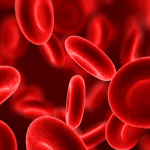 A research team at the University of Geneva, Switzerland, published study results on Wednesday that revealed molecules toxic to Plasmodium falciparum but not human red blood cells, creating a way to combat malaria infection.
A research team at the University of Geneva, Switzerland, published study results on Wednesday that revealed molecules toxic to Plasmodium falciparum but not human red blood cells, creating a way to combat malaria infection.
The Plasmodium falciparum parasite, which causes malaria, has been difficult to treat because of its adaptation and resistance to treatment.
The study, led by Facility of Sciences Professor Didier Picard, examined Heat Shock Protein 90, which is essential in several steps of malaria’s life cycle.
“Our goal was to determine if there was a difference between the human form and the parasitic form of HSP90 that we could exploit for therapeutic purposes,” Tai Wang, a Ph.D. student at the Department of Cell Biology of UNIGE, said. “The human chaperone harbors a “pocket” that binds molecules known to inhibit its activity. I compared it with that of the Plasmodium, hoping to find a difference which could be targeted by a specific inhibitor, but didn’t,”
Wang used a virtual library of more and one million chemical compounds to screen for potential therapeutic candidates.
“The simulations were conducted to analyze the dynamics of interaction between the HSP90 and the candidates, leading to the discovery of inhibitors which interact specifically with the Plasmodium falciparum chaperone,” Wang said.
The selected molecules were tested for toxicity in doses that would kill the parasites without harming infected blood cells.
“These recently patented molecules are part of a group of compounds related to the 7-azaindoles, which exclusively bind the HSP90 of the parasite, but not the human form. The next step will be to fine-tune them in order to perform clinical tests,” Picard said.
The study was conducted in collaboration with researchers from the Geneva-Lausanne School of Pharmacy and the University of Basel. It was published in the Journal of Medicinal Chemistry.
Source: Vaccine News daily

















